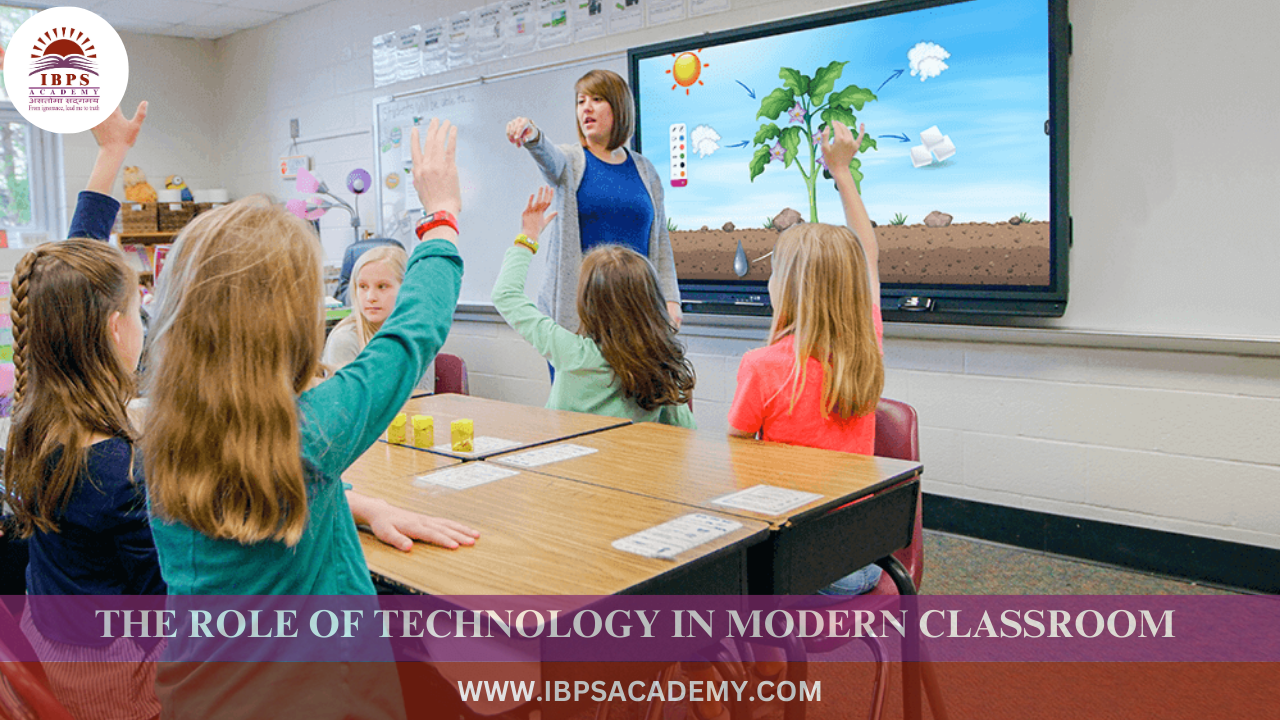THE ROLE OF TECHNOLOGY IN MODERN CLASSROOM
Published on: Feb 07, 2025
THE ROLE OF TECHNOLOGY IN MODERN CLASSROOM
Technology plays a significant and transformative role in modern classrooms, enhancing the learning experience for both students and teachers. Here are some key ways technology influences education today:
1. Access to Information
- Digital Resources: Students can access a wealth of information online, including textbooks, research papers, instructional videos, and interactive websites. This broadens learning opportunities beyond traditional textbooks.
- Real-Time Updates: Teachers can access the latest resources, current events, and up-to-date studies, keeping the classroom relevant and connected to the outside world.
2. Personalized Learning
- Adaptive Learning Tools: With programs like Khan Academy, Duolingo, and various other educational platforms, students can learn at their own pace. These tools adjust the content based on the student’s individual learning progress.
- Differentiation: Technology allows teachers to create customized lesson plans to cater to diverse student needs, such as different learning speeds, abilities, and interests.
3. Collaboration and Communication
- Collaboration Tools: Platforms like Google Classroom, Microsoft Teams, and Zoom facilitate collaboration among students, even beyond the classroom. They can work together on projects, discuss topics in forums, and share resources in real-time.
- Teacher-Student Interaction: Technology allows for more frequent communication through emails, messages, and virtual office hours, enabling students to seek help outside of traditional classroom hours.
4. Engagement and Motivation
- Interactive Learning: Tools like interactive whiteboards, tablets, and educational apps make learning more engaging. Students can participate in games, simulations, and hands-on activities that enhance their understanding of complex subjects.
- Gamification: Many educational tools integrate gamification elements, such as points, levels, or rewards, to make learning more fun and motivating.
5. Improved Assessment and Feedback
- Instant Feedback: Technology allows for automated quizzes and assessments, giving students immediate feedback. This helps them understand mistakes and areas that need improvement.
- Data-Driven Insights: Teachers can track student progress through learning management systems (LMS) and adjust teaching methods accordingly. These insights help identify trends, strengths, and areas needing attention.
6. Remote Learning
- Flexibility: Online learning tools and platforms have made education more accessible. Whether students are in a traditional classroom, at home, or in a hybrid setup, they can continue their education without disruptions.
- Access to Global Education: With the power of the internet, students can participate in online courses, workshops, and seminars from institutions around the world.
7. Increased Accessibility
- Assistive Technologies: Tools like screen readers, speech-to-text software, and translation apps help make learning more accessible to students with disabilities or those learning in a second language.
- Learning for All: Technology helps break down geographical, financial, and physical barriers, providing more equitable access to education.
8. Teacher Support
- Professional Development: Teachers can leverage technology to stay current with new teaching methods, discover new resources, and connect with other educators for collaboration and support.
- Automation of Administrative Tasks: Technology helps automate grading, attendance tracking, and lesson planning, which reduces the time spent on administrative tasks, allowing teachers to focus more on teaching.
9. Global Learning Environment
- Virtual Classrooms and International Connections: With virtual learning environments, students can connect with peers globally, participate in international projects, or even meet experts and guest speakers from different cultures.
- Cultural Awareness: Technology enables the sharing of global perspectives and experiences, fostering cultural awareness and empathy.
10. Future Skills Preparation
- Tech Literacy: Incorporating technology in the classroom helps students develop important digital literacy skills. Understanding how to use tools for research, creation, and communication is crucial in today’s job market.
- Critical Thinking and Problem-Solving: Through simulations, coding, and tech-driven learning experiences, students learn how to approach problems, analyze data, and create solutions.
CONCLUSION
Technology in modern classrooms is not just about using devices—it's about enhancing learning experiences, creating opportunities for deeper engagement, and preparing students for a tech-driven future. By integrating technology thoughtfully, education becomes more personalized, interactive, and accessible, making learning a dynamic, lifelong journey.


